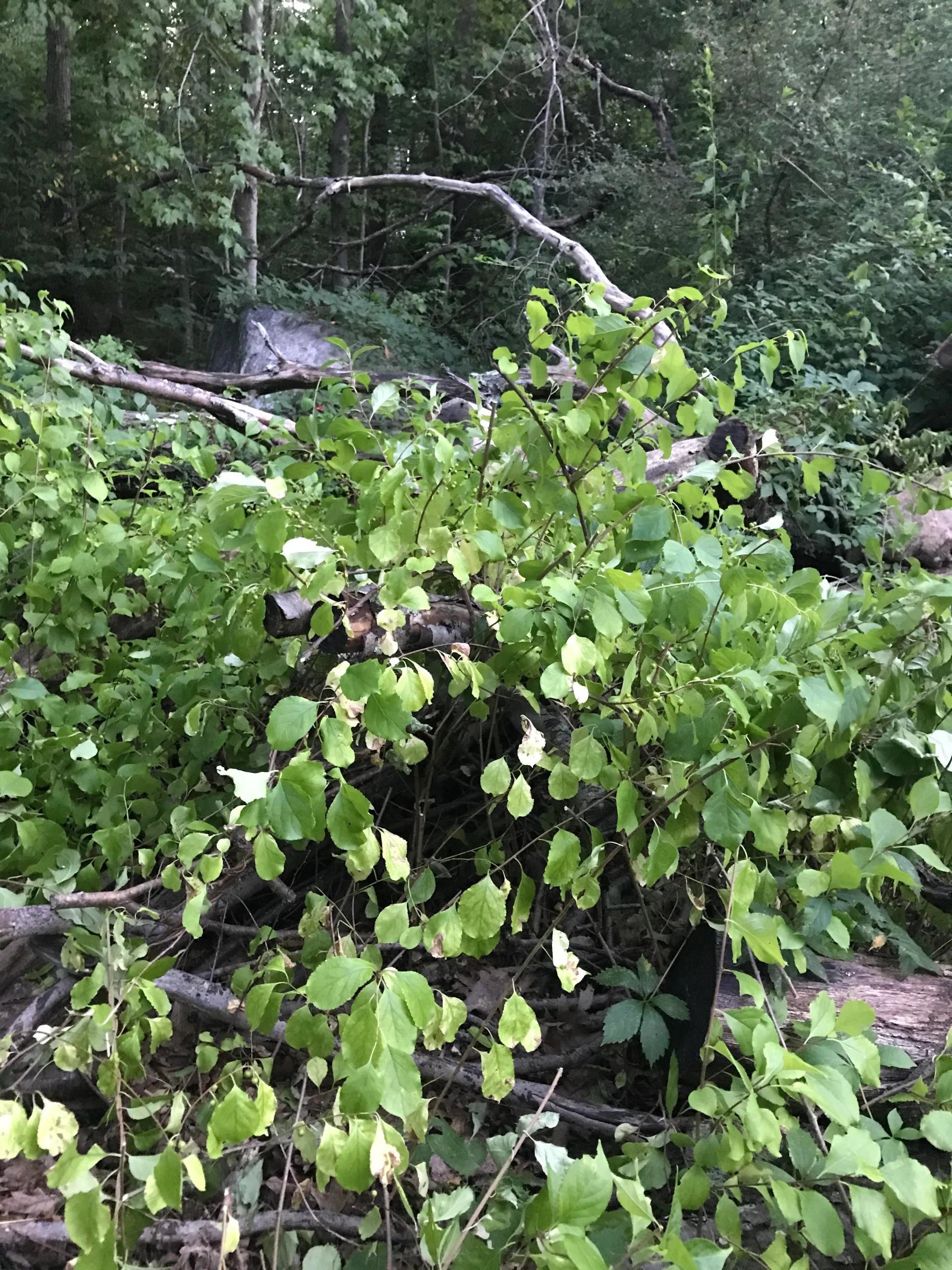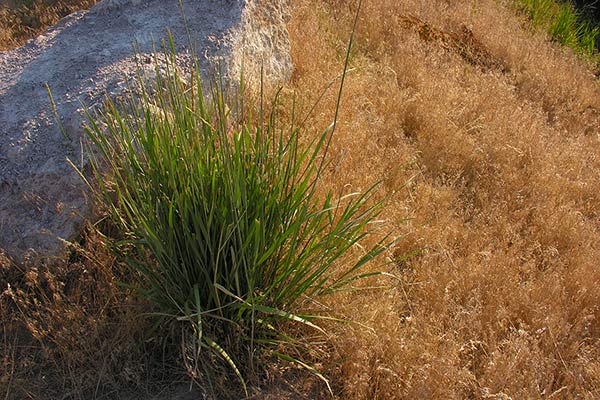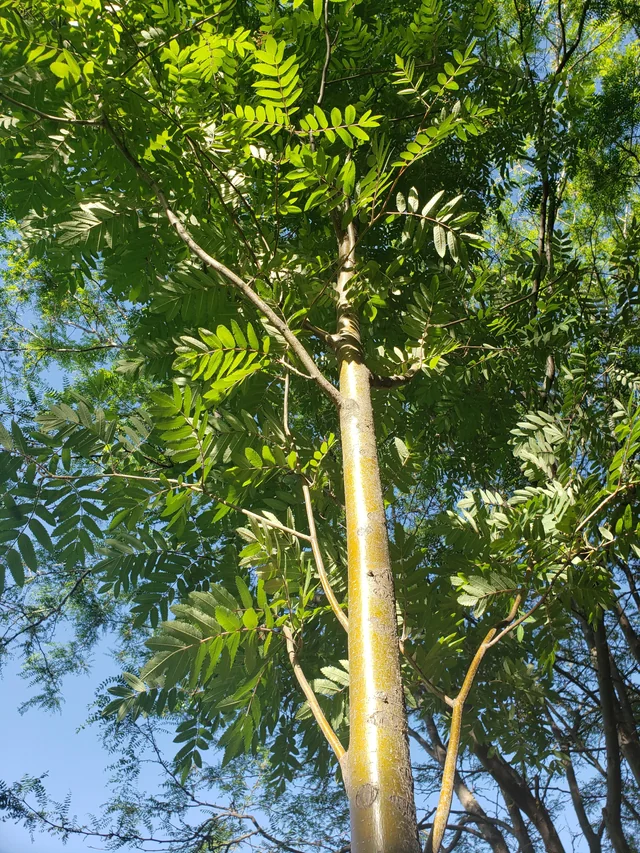1. Lily Of The Valley - It Spreads Like Wildfire!

image source: reddit.com
Invasive species can be devastating as they take over local ecosystems and damage native areas. Many of these plants are exterminated in order to maintain the natural landscape, however we humans can't help but keep what we adore. Lily Of The Valley are relentless in how they spread, and they kill off much of what they penetrate. They're popular wedding flowers due to their appearance but don't be fooled, they're true killers in a pretty disguise!
2. Lords And Ladies - It Is Fiercely Poisonous

image source: reddit.com
Like many invasive species, Lords and Ladies may trick you into thinking their berries are delicious due to their bright orange color in the months of fall. In actual fact they're really poisonous, as is the rest of the plant. What makes them more nefarious, is that they need not rely on anything or anyone to spread their seed as they're quite capable of doing that themselves!
3. Oriental Bittersweet - It Suffocate The Plants Around It

image source: reddit.com
Not to be confused with the American Bittersweet which is native to the US, the Oriental Bittersweet has the power to dwarf plants and trees growing nearby, causing them to suffocate and die. You can easily tell the difference between the native and the invasive species, as the Oriental's stems have no thorns whereas the native species' do.
4. Morning Glory - You Can't Get Rid Of It Once It Starts To Spread

image source: reddit.com
The other name for Morning Glory is Field Bindweed, which is a vine that intrudes upon other plants' space doggedly until it takes over pretty much the whole area. If a place becomes infested with the stuff then it's beyond difficult to get rid of, and the already established plants have a 60% chance of dying because of it. Hardly glorious as its name suggests!
5. Lemon Balm - It's Impossible To Manage

image source: reddit.com
Lemon Balm can be very useful if you're into herbalism, as it can help to relieve anxiety. Its best to be grown in a controlled environment as it can sow its own seeds and therefore reproduce uncontrollably. You can manage its growth by simply removing the flower heads, however if it gets out of hand then whole plant removal is the most effective.
6. Creeping Thistle - It Can Take Over!

image source: reddit.com
Creeping Thistle is so called due to the way it's roots spread underground. It advances so far that it takes all of the vital resources for itself so that surrounding flowers and plants wither and die. Upon removal, which needs to happen immediately, they should be completely uprooted as their roots will continue to spread even if they're broken.
7. Traveler's Joy - It Grows Over Safe Plants!

image source: woodlandtrust.org.uk
Many of these invasive species have really positive sounding names, but we doubt this one brings much joy to the native plants it impedes upon. It grows over trees and bushes which in turn affects their growth negatively. If an area is not maintained then Traveler's Joy, or Old Man's Beard as it's also known, can grow entirely wild as it can reproduce itself.
8. Himalayan Blackberry - It Should Never Have Come Here

image source: reddit.com
Us humans like to disturb the peace of well functioning ecosystems for our own gain, and the introduction of the Himalayan Blackberry is a great example of this. Their fruit was clearly just too tasty for Americans to resist as they brought it home to grow and feast on, unaware of the negative consequences it'd have on native species!
9. Cheatgrass - It Grows Too Quickly!

image source: wolves.wordpress.com
Cheatgrass can be eaten up by animals like squirrels, mice and deer, however not in enough quantities that it doesn't almost wipe out all the other plants around it. It grows and greens faster than any other species which means it has a head start in the competition for light, resources and space.
10. English Holly - It's Spikes Can Danger Wildlife

image source: reddit.com
Holly always makes us think of Christmas, with its red berries and spiky leaves, but did you know this plant is highly invasive and often a problem for other plants? It is robust in that it doesn't need light to grow, and their berries appear so tempting for birds that they can't help but gobble them up. What comes out the other end is the holly seed, and so the plant is able invade far and wide!
11. Reed Canarygrass

image source: reddit.com
Reed Canarygrass can be disastrous for ecosystems such as wetlands, as its thick growth blocks any of the native species' growth so that the environment which is usually full of life dies away with its spread. Flooding in these areas then becomes more common, completely annihilating any biodiversity.
12. Horse Chestnut

image source: reddit.com
Despite their nuts being nutritious for many animals, the Horse Chestnut tree's ability to poison the soil surrounding it makes it a problem species in many of America's parks and streets. The poison ensures that the neighboring plants struggle to flourish so that it can keep all resources to itself.
13. Japanese Stiltgrass

image source: reddit.com
Japanese Stiltgrass was used as packaging back in the early 20th century for imports coming from Asia into America. Since then, it has contaminated crops in the US and when it does so it completely takes over, wiping out any native species that are in its way.
14. Robert's Geranium

image source: reddit.com
Robert's Geranium, also called Herb Robert or Stinky Bob, is pretty and dainty when it flowers, which made it a popular plant to put on display before its classification as a Class B noxious herb. It wastes no time in seizing available space once it invades, so it's under compulsory control in some states.
15. Chinese Wisteria

image source: reddit.com
Chinese Wisteria is an aggressive invader and its vines grow at an almighty speed! They suffocate any surrounding plants and block their sunlight hindering growth. It outcompetes most native plants due to its persistence, which makes it an enemy of any keen gardener or eco warrior.
16. Cherry Laurel

image source: reddit.com
Despite the flowers and leaves smelling of almonds, the Cherry Laurel can leave you very poorly if you're seduced by its delicious scent. Its resilient nature means it can withstand conditions that other plants can't, meaning it will beat the native species in the fight for survival.
17. Garlic Mustard

image source: reddit.com
Garlic mustard has many benefits for humans; it is edible, has been used in herbal medicine and has even been used to alter the effects of erosion. When left unchecked though, it can be catastrophic for ecosystems as it grows sooner than any other species, giving it first choice of essential resources. It also poisons the soil affecting anything that grows there, including the mushrooms!
18. Periwinkle

image source: reddit.com
Its delicate flowers make it a favorite amongst those with attractive gardens, but should you choose to plant such a tenacious species then be prepared for a lot of maintenance. It can spread its thick herbage far and wide due to its ability to ground roots wherever it touches the earth, meaning it takes over other plants' environments and causes havoc.
19. Tree Of Heaven

image source: reddit.com
In spite of its name, there isn't much heavenly about this invasive species. It rarely discriminates where it grows and can tolerate most conditions, even where it's unwelcome. It can get in the way of native growing and even poison them on the way, making it a tree you would not want in your area!
20. Scotch Broom

image source: reddit.com
Like many invasive species, the Scotch Broom came into the US as a decoration to make someone's living space look attractive, but little was it known how damaging it could be to the ecosystem for years to come. Its growth is heavy and thick meaning that other plants don't get a chance, which in turn hinders the insect and small animal populations in the area.
21. Privet

image source: reddit.com
The privet is invasive in many countries around the world, including the US, and it usually wins the battle of survival when it comes to competing with native plants. It can live with less light than most plants, and it usually grows where the land has been disrupted meaning there are already less rivals. Its removal is costly and therefore not always possible. What a hardy being!
22. Japanese Barberry

image source: reddit.com
The Japanese Barberry managed to root itself in the natural landscape (mainly in dense woodland) after breaking loose from someone's private collection. The Barberry seems to attract ticks so ensure you're fully covered if you ever intend on walking amongst them!
23. English Ivy

image source: reddit.com
English Ivy is relentless in the way it grows. In an affected area, you can expect to see it all along the ground, surrounding other plants and up walls and trees. It will smother other species and outcompete them for light and nutrition, making it detrimental to the ecosystem it has penetrated.
24. Norway Maple

image source: reddit.com
The Norway Maple tree is highly popular now in the US, with its seed being dispersed by the wind. It grows tall in forests meaning that the undergrowth has a hard time receiving any sunlight through its leaves. Any creature that relies on the forest floor for nutrition will either die out or move to other areas due to the Norway Maple's take over.
25. Poison Hemlock

image source: reddit.com
Poison Hemlock loves to grow in areas that have been distressed, especially if the soil is moist. It is extremely poisonous to humans and most animals, and can cause skin irritation if it touches you. Hemlock has even killed people who mistook it for another edible plant whilst out foraging!
26. Canada Thistle

image source: reddit.com
This invasive species has been in America since the 17th century, and it continues to affect biodiversity throughout the country. It usually wins out in the competition for nutrients due to its dense growth and the fact it spreads like wild fire. It doesn't help that removing it can be really tricky!
27. Giant Hogweed

image source: reddit.com
We would love to know what idiot decided it'd be a good idea to bring Giant Hogweed to the US to use as an adornment. The US have now made it illegal to move Hogweed around the country without permission. Its secretion is so noxious that it can even cause you to go blind!
28. Japanese Knotweed

image source: reddit.com
Japanese Knotweed is said to inhabit every single continent besides the icy Antarctica, probably making it the most successful invasive species to exist. Due to its commonality, there are businesses worldwide whose function it is to eradicate the plant - and we doubt they'll ever be out of business!
29. European Mount Ash

image source: reddit.com
As its name suggests, the Mount Ash, or the Rowan tree, originates in Europe and was brought to America to look pretty in someone's garden. As the common story goes, it managed to escaped and grow wild, taking all of the native's resources making it difficult for them to grow.
30. Purple Loosestrife

image source: reddit.com
Purple Loosestrife was only brought to America in the 1800s for reasons unknown, however it has been suggested that it was due to its vibrant purple color. Unfortunately it's not a welcome addition to the American ecosystem, as its tall stems mean it blocks the sunlight from reaching the lower plants.





























